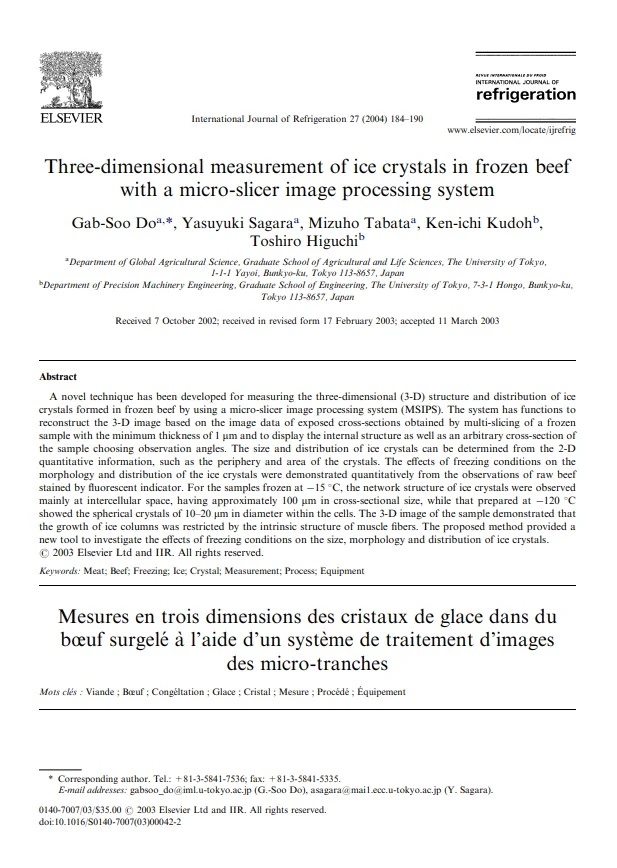Автор: Gab-Soo Do, Yasuyuki Sagara, Mizuho Tabata
Год: 2004Язык: АнглийскийТип: Статьи
A novel technique has been developed for measuring the three-dimensional (3-D) structure and distribution of icecrystals formed in frozen beef by using a micro-slicer image processing system (MSIPS). The system has functions toreconstruct the 3-D image based on the image data of exposed cross-sections obtained by multi-slicing of a frozensample with the minimum thickness of 1 mm and to display the internal structure as well as an arbitrary cross-section ofthe sample choosing observation angles. The size and distribution of ice crystals can be determined from the 2-Dquantitative information, such as the periphery and area of the crystals. The effects of freezing conditions on themorphology and distribution of the ice crystals were demonstrated quantitatively from the observations of raw beefstained by fluorescent indicator. For the samples frozen at 15 C, the network structure of ice crystals were observedmainly at intercellular space, having approximately 100 mm in cross-sectional size, while that prepared at 120 Cshowed the spherical crystals of 10–20 mm in diameter within the cells. The 3-D image of the sample demonstrated thatthe growth of ice columns was restricted by the intrinsic structure of muscle fibers. The proposed method provided anew tool to investigate the effects of freezing conditions on the size, morphology and distribution of ice crystals.


















Комментарии
Войдите или зарегистрируйтесь, чтобы оставить комментарий